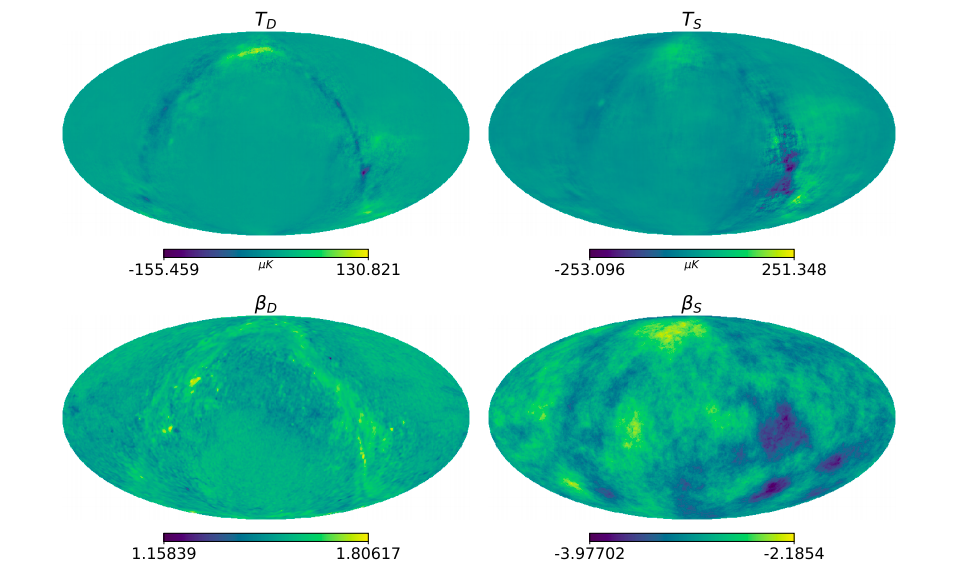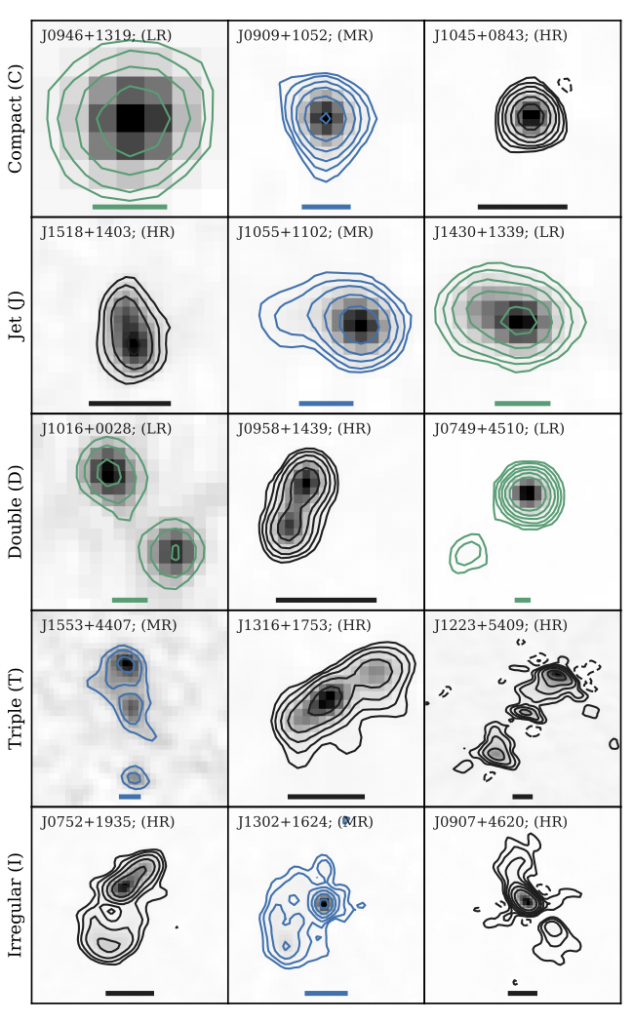We invite applications for several fully-funded PhD studentships in astrophysics at Newcastle University, starting in 2022. Within ourObservational Astronomy and Cosmology & Quantum Gravity groups, we offer a vibrant environment for PhD students and postdocs with links to other areas of physics, mathematics and statistics. We value equality, diversity and inclusion and strive to promote it within our groups and beyond.
Below is a short summary of the available positions:
X-ray polarization: a new window to understand black holes. Studentship supervised by Dr Adam Ingram
Deadline: January 31st 2022
Further details: https://www.ncl.ac.uk/postgraduate/fees-funding/search-funding/?code=msp045
Understanding the connections between supermassive black holes and galaxies with the James Webb Space Telescope (JWST) Studentship supervised by Dr David Rosario
Deadline: January 31st 2022
Further details: https://www.ncl.ac.uk/postgraduate/fees-funding/search-funding/?code=msp041
Bell-Burnell Graduate Scholarship Graduate Scholarship for students from groups currently under-represented in Physics (part-funded from the IOP). Our group members offer several cosmology and observational astronomy projects.
Deadline: 12 December
Further details: https://www.ncl.ac.uk/postgraduate/fees-funding/search-funding/?code=msp040
Robinson Cosmology PhD studentships: Two prestigious PhD studentships in cosmology. We offer projects ranging from early universe theory to late-time cosmology with applications to galaxy surveys.
Deadline: 31 January
Further details: https://research.ncl.ac.uk/phdstudentships/robinsoncosmology/
Lady Bertha Jeffrey’s PhD studentship in Theoretical Physics or Astrophysics:Prestigious PhD studentship in Theoretical Physics orAstrophysics. Projects range from black holes to galaxies and the cosmic web.
Deadline 31: January
Further details: https://www.ncl.ac.uk/postgraduate/fees-funding/search-funding/?code=msp042
David Rosario featured in PBS/Nova documentary series
From late October into December, a five-part Nova documentary series called “Universe Revealed” is airing on the US Public Broadcasting Service (PBS; link below). With ground-breaking graphics and visuals, the series explores modern themes in astrophysics, like the fate of our Galaxy, and the origin of life on planets around other stars.
David Rosario, a senior lecturer in our Astronomy group, is one of the featured scientists on the series, as well as a contributor to its scientific storyline.
“Universe Revealed” is a joint production of the BBC Science Unit and PBS/Nova. Most of David’s work for the series was done with the BBC over late 2020 and early 2021, after he was contacted by a BBC producer who had came across his short film for the Newcastle Centre for Life on YouTube (https://youtu.be/D0eY356N2zo). While the global pandemic placed major restrictions on travel, David managed to film sequences on the Isle of Skye in Western Scotland (Episode 2 on the Milky Way), and at High Force waterfall in the North-East of England (Episode 4 on Black Holes), as well as a studio interview in London.
A parallel series, called “Universe”, is also airing on BBC Two, presented by Prof Brian Cox. David features in a vignette on the GAIA mission towards the end of Episode 3.
David will continue his relationship with the BBC Science Unit as an expert on science with the James Webb Space Telescope (JWST). You are encouraged to get in touch with him to collaborate on science outreach and engagement ideas.
PBS/Nova: Universe revealed: https://www.pbs.org/wgbh/nova/series/nova-universe-revealed/
David’s webpage: https://www.ncl.ac.uk/maths-physics/people/profile/davidrosario.html
Three Postdoc Positions in Extragalactic Astronomy
The School of Mathematics, Statistics and Physics (MSP) at Newcastle University are seeking to recruit three Research Associates in Extragalactic Astrophysics, joining an exciting UKRI-funded research program managed by Dr. Christopher Harrison. Information and application instructions are available here: https://jobs.ncl.ac.uk/job/Newcastle-Research-Associate-in-Extragalactic-Astrophysics/732863401/
The project will combine multi-wavelength astronomical observations with hydrodynamic simulations in order to make significant scientific progress in understanding how Active Galactic Nuclei (AGN) influence the formation and evolution of galaxies. Three Research Associate positions are available covering the following specific areas:
- 1) MOONS support and related science:
You will become a member of the MOONS extragalactic consortium. You will have experience in optical/near-infrared spectroscopy and/or processing large datasets. The holder of this 3+1 year position will split their work effort halfway between supporting data reduction/software/archiving for the the forthcoming MOONS multi-object spectrograph and on related science projects
- 2) Multi-wavelength observations of AGN feedback:
You will have relevant skills in observational astronomy. Applicants with expertise in reducing/analysing interferometric radio data are particularly encouraged. The holder of this 3 year position will work on a variety of observational datasets to study how AGN are influencing the properties of their host galaxies
- 3) Hydrodynamic simulations of AGN feedback:
You will have experience in hydrodynamic galaxy simulations. The holder of this 3 year position will develop hydrodynamic simulations to produce observationally testable predictions of the influence of AGN on their host galaxy’s interstellar medium.
Chris Harrison wins Future Leaders Fellowship Grant
Chris Harrison is among the nearly 100 of the UK’s future science leaders set to benefit from a £113m cash boost to help commercialise their innovations during the Round 5 of the UKRI Future Leaders Fellowship. Delivered through UK Research and Innovation’s (UKRI) flagship Future Leaders Fellowships scheme – which aims to establish the careers of the next generation of world class British scientists – the investment will enable researchers at universities and businesses to progress their studies quickly by funding essential equipment and paying for researcher wages.
Chris will explore using data from the best telescopes in the world, as well as computer simulations, to understand the relationship between supermassive black holes and galaxies. Alongside this, he will be developing new techniques to make the data more accessible to people who are blind and vision impaired. As part of this he will be looking for 3 PDRAs to join the AstroObs group to work on observations and simulations!
Outreach: 2 articles in Astrobites
Alex has published two more articles for the Astrobites collaboration.
The first article is an interview with the organisers of the Cosmology from Home 2021 conference (which includes fellow Newcastle PGR Niko Sarcevic) about what makes a successful online conference. This includes a discussion about the aims of online conferences and how they may differ from in-person conferences, as well as some practical tips, tricks, and tools for building a conference online from the start.
The second article is a daily paper summary looking at recent work done by Dan Thomas Sankarshana Srinivasan, Francesco Pace, and Richard Battye in a series of two papers about how to build cosmological simulations for modified gravity in a model independent way. Paper I sets up a mathematical framework for extending standard techniques to work in both the large and small scale limit, even through an intermediate regime where both cosmic perturbation theory and Newtonian theory don’t apply. Paper II sets up modified gravity simulations using this framework and through some simple test cases demonstrates the importance of these sorts of techniques for exploring modifications to gravity in the era of next generation surveys.
Paper: Quasar-driven outflows do not cause rapid in-situ quenching of star formation
Jan Scholtz, former PhD student of Chris Harrison, has published his paper re-assessing the insitu impact of ionised outflows (driven by three z~2.5 quasars) on the star formation in their host galaxies. The paper has been accepted by MNRAS and is available on the arXiv:2106.05277.
The paper uses spatially-resolved measurements of the dust distribution (using sub-mm interferometric data from ALMA) and the ionised gas properties (using integral field spectroscopic data from SINFONI). The three quasars under investigation were of particular interest due to previous claims (using only SINFONI data) of strong evidence that the star formation was suppressed at the location of the galaxy-wide ionised outflows. However, the new evidence from ALMA suggests that dusty-star formation is still ongoing at the locations of the outflows, in at least two of these targets. Nonetheless, compared to regular star-forming galaxies at the same redshift, and with the same mass, their star formation rates appear to be low. This might mean the impact by the quasar driven outflows on the host galaxy, is not a rapid shut down of star formation, but star formation could be suppressed on longer timescales by the cumulative effect of quasar episodes during the growth of these massive black holes. This all adds to helping solve the mystery of how quasars change the life of galaxies!
Two PGRs win prizes for their scientific community service and outreach
The “EuCAPT Outstanding contributor” prize was awarded to Newcastle postgraduate researcher, Niko Sarcevic, during the First EuCAPT Annual Symposium. EuCAPT (European Consortium for Astroparticle Theory) is an organization with a goal of bringing together the European astroparticle and cosmology community. EuCAPT was established in 2019, with Gianfranco Bertone as a director and coordination from CERN. EuCAPT has over 600 members (2019 census).
“I joined EuCAPT as a junior contributor in the fall of 2020. I have been working closely with Gianfranco Bertone (GRAPPA) and David Marsh (Stockholm) on developing new ways of bringing the EuCAPT community together. An example of such an initiative is a new feature on the EuCAPT blog called “Community profiles” which is a weekly interview with a member of the community. Another example of my contribution is creating and hosting a HEP-ASTRO-COSMO GitHub repository where all the open source code in the field of astroparticle, particle physics and cosmology is collected. Lastly, one of the campaigns resulted in the interactive community map featured on the EuCAPT home page. A similar code, publicly available, can be found on my website.”
The “Postgraduate Prize for Outreach” was awarded by the Newcastle School of Mathematics, Statistics, and Physics to Alex Gough. This prize was awarded for Alex’s contributions to the Astrobites collaboration and their public outreach talk to the Newcastle Astronomical Society about cosmology.
The Astrobites collaboration is an international group of masters and PhD students who write accessible summaries of current astrophysics research papers, as well as specialist “Beyond” posts about DEI problems in astronomy, mental health in academia, what the day-to-day life in astronomy looks like, and application processes and career advice. Contributing authors write approximately one article per month, along with helping edit other authors’ articles.
“I’ve been reading Astrobites articles since I was in school, and getting to help contribute to the collaboration has been something I’ve wanted to do for a long time. I think the ‘daily bites’, which make up the backbone of Astrobites provide a much needed niche in scientific literacy, helping aid undergraduate students in learning how to examine actual research articles. I’m excited to help contribute to some of the Beyond topics that Astrobites has become more focused on in recent years, especially concerning equity issues in astronomy and physics. You can read my current articles or find out about other things I do on my website.”
Outreach: Astrobites article
Alex has published an article for the Astrobites collaboration. This article is based on Consistent equivalence principle tests with fast radio bursts by Robert Reischke, Steffen Hagstotz, and Robert Lilow about how to use correlations in FRB dispersion measures to constrain deviations from general relativity. You can read the full article here.
Paper: (Update) When galactic foregrounds are allowed to vary
A minimal power-spectrum-based moment expansion for CMB B-mode searches by S. Azzoni, M. H. Abitbol, D. Alonso, A. Gough, N. Katayama, T. Matsumura
Alex’s first paper has now been published in JCAP! You can read the previous blog post about the arXiv version of this paper here.

Quasar Feedback Survey Launched
I am delighted to introduce our Quasar Feedback Survey (https://blogs.ncl.ac.uk/quasarfeedbacksurvey/) a multi-wavelength study of how quasars interact with their host galaxies. With this first paper (https://arxiv.org/abs/2103.00014) we use high-resolution VLA imaging to discover that hidden radio AGN are prevalent, and demonstrate a connection between the radio properties and the ionised gas kinematics. This all shows the importance of studying the radio emission, even in “radio quiet”, quasar hosts to understand feedback. With the launch of our website we have also released data products from this paper and our earlier pilot papers on sub-sets of the targets. These include data tables, radio images, data cubes etc.

